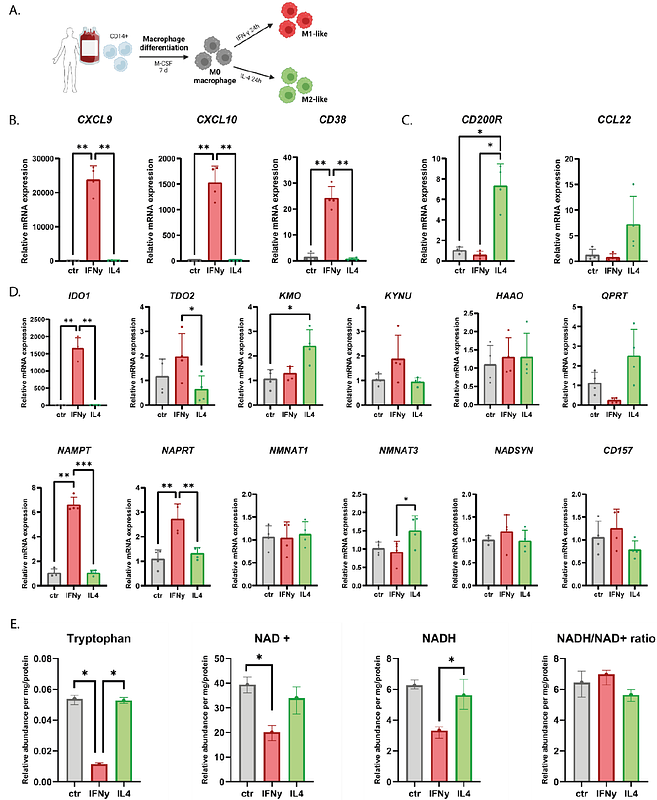Kynurenine and NAD+ Pathways are Associated with Macrophage Content and Polarization in Carotid Plaques

Kynurenine and NAD+ Pathways are Associated with Macrophage Content and Polarization in Carotid Plaques
Teunis, C. J.; Zijlstra, L. F.; Levels, J. H. M.; Vinten, K. T.; Tretowicz, M. M.; Mol, B. M. M.; Sluimer, J. C.; Mokry, M.; Murphy, A. J.; Kroon, J.; Stroes, E. S.; De Kleijn, D.; Houtkooper, R. H.; Neele, A. E.; Hanssen, N. M.
AbstractBackground and Aims: Metabolism dictates macrophage function and plays a central role in atherosclerotic plaque progression. The kynurenine pathway, which metabolizes the majority of the essential amino acid tryptophan, plays a pivotal role in regulating immune responses and supporting NAD+ synthesis, essential for cellular energy metabolism. Higher circulating kynurenine levels are associated with cardiovascular disease, yet their role in atherosclerotic plaques is unclear. This study aims to investigate the underlying mechanisms driving increased kynurenine concentrations in plaques and to determine whether kynurenine serves as a mere biomarker of low-grade inflammation or reflects specific macrophage-driven metabolic alterations that could position it as a potential therapeutic target. Methods: We used histological and transcriptomic data from two biobanks: the Athero Express Biobank (AE; n=91) and Maastricht human plaque study (MaasHPS, n= 26). Macrophages were identified through CD68 staining in AE, and M1/M2-like macrophage subtypes were distinguished by iNOS/CD68 and arginase/CD68 expression in MAASHPS. Primary human monocyte-derived cultured macrophages were polarized into M1- and M2-like phenotypes for using IFN-{gamma} and IL-4, respectively. Tryptophan, kynurenine and/or NAD+ concentrations in plaques were quantified usingliquid chromatography and metabolomics analyses. Results: Kynurenine concentrations were significantly higher in plaques with greater macrophage density (p = 0.023). Transcriptomic analysis in AE revealed upregulation of IDO2, AFMID, and KYNU in plaques with increased macrophage infiltration (p < 0.05), but not IDO1 (p = 0.16). In the MAASHPS biobank, higher IDO1, KYNU, and KMO expression correlated negatively with M2 marker positive macrophages (p < 0.001), while HAAO correlated positively (p < 0.01). In vitro, M1-like macrophages showed increased IDO1 and reduced QPRT expression compared to M2-like macrophages. We found that this disruption in kynurenine pathway gene expression led to decreased NAD+ concentrations in M1-like macrophages compared to M2-like macrophages in vitro. Conclusion: Higher kynurenine levels in atherosclerotic plaques are increased by the increased presence of M1 macrophages, likely driven by both an increased IDO1 activity and reduced QPRT gene expression. This leads to decreased concentrations of NAD+, potentially determining the phenotype of the macrophages. Future studies should address whether modulation of the kynurenine pathway restores NAD+ metabolism and leads to a decrease in inflammation and an increased stable plaque phenotype.